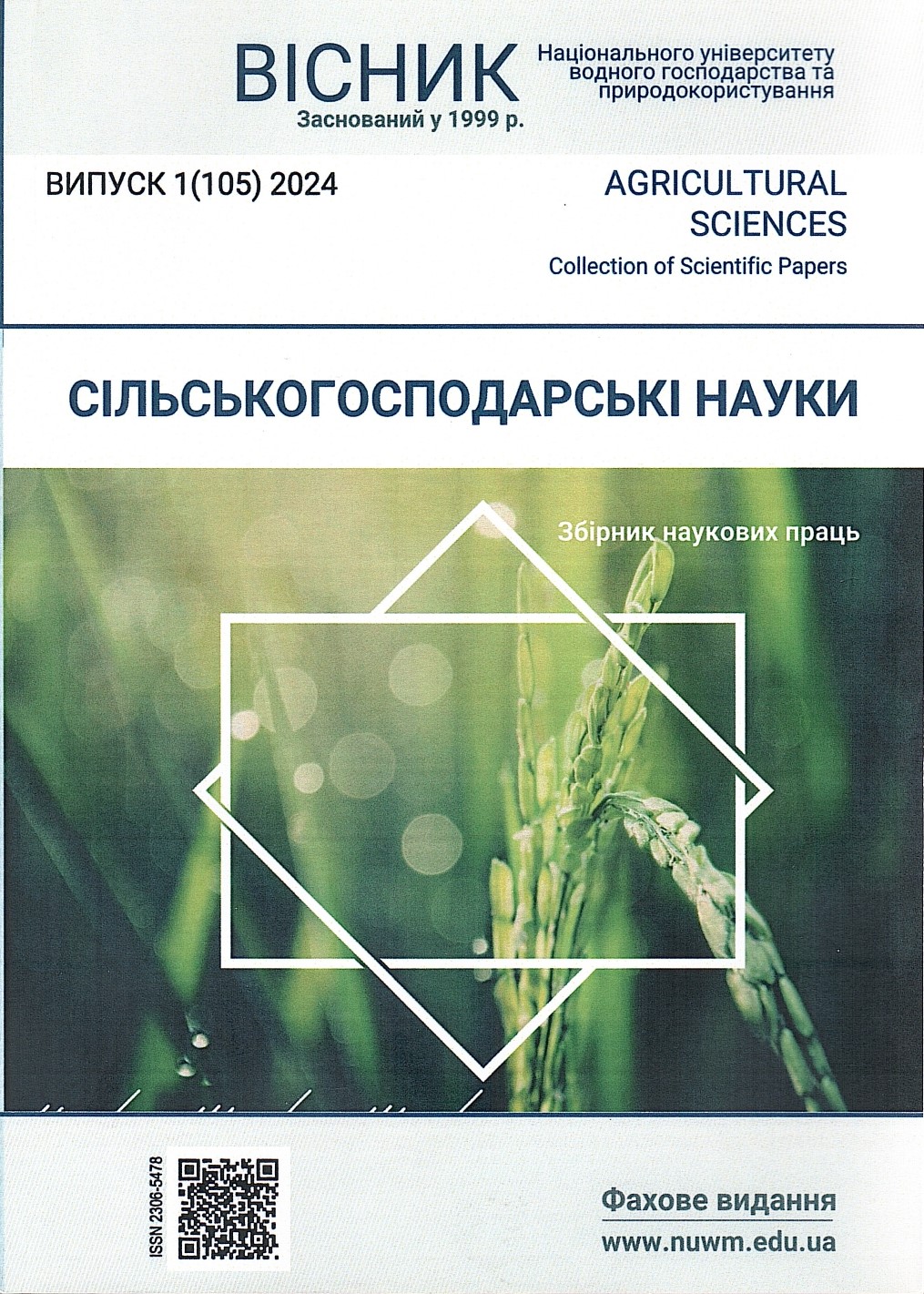ECONOMIC AND ЕNERGY ASSESSMENT OF SOC BALANCE IN SOD-PODZOLIC SOIL UNDER FERTILIZATION AND DIFFERENT RATES OF LIMING IN CROP ROTATION
DOI:
https://doi.org/10.31713/vs1202411Keywords:
soil organic carbon (SOC), dolomite lime, calcium lime, economic losses, energy consumption, energy potential, efficiencyAbstract
The soil organic carbon balance (SOC) in the context of climate change adaptation and ecosystem energy source preservation is one of the topical issues in agrarian production. The aim is to conduct an economic and energy evaluation of the organic carbon balance formed in fertilized variants with different types and doses of liming. Research methods include field research, calculation, analysis, and generalization. In variants with different doses and types of chemical ameliorants alongside the recommended fertilizer dose and with incorporation into the soil of crop residues, a positive organic carbon balance (Corg) was obtained. The highest indicator, 0.37 t/ha, was observed in the variant with the application of 1.5 Hh doses of CaMg(CO3)2 + N112P82K105. In the control, with a deficit balance of Corg at the level of -0.20 t/ha, the losses of carbon from the soil were equivalent to 112.1 USD/ha. Taking into account the change in soil energy potential (∆Epg) due to the formation of a positive Corg balance increased the energy efficiency coefficient (Кее) by 3–6% compared to the indicators obtained by traditional calculation as the ratio of the energy produced by the crop to the anthropogenically spent energy. A decrease in Кее to 1.57 in the control indicates the depletion of the energy resource of sod-podzolic soil. Thus, for the preservation of ecological stability and high crop productivity in crop rotation on sod-podzolic soil in the conditions of the Western Polissya, the application of 1.0 and 1.5 doses of Hh CaMg(CO3)2 with the recommended dose of mineral fertilizers and with the incorporation of crop residues into the soil is an effective measure to increase organic carbon in the soil. This provides a return of 153.4–218.3 USD/ha due to the preservation of Corg and increases Кее due to account for the change in soil energy potential to 6.22–6.78 units.Downloads
Published
2024-05-31
Issue
Section
Articles

